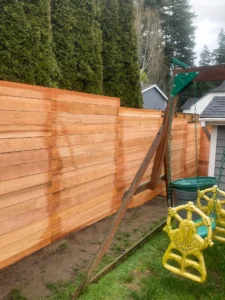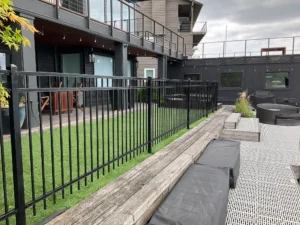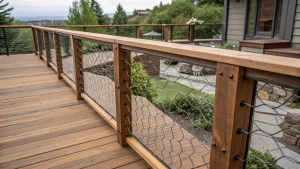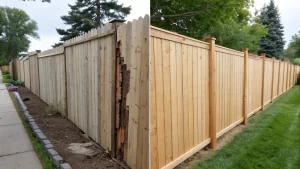Inline Fence helps Seattle homeowners navigate height regulations to build beautiful, compliant horizontal fences that deliver privacy and curb appeal. ✨
For many Seattle homeowners, a fence is more than just a boundary line — it’s a statement piece that blends practicality with design. Among today’s options, the horizontal fence has become a standout favorite for its sleek, modern look that complements the clean lines of Northwest architecture. But as appealing as it may be, building one isn’t as simple as setting boards in place.
The challenge comes down to height. On one side, homeowners want a barrier that provides enough privacy from neighbors and street traffic. On the other, they face horizontal fence height rules designed to preserve sightlines, maintain community aesthetics, and keep public spaces safe. Striking the right balance between style and compliance can feel tricky, especially when each yard location — front, side, and back — has its own restrictions.
While this style adds a contemporary touch, it’s important to know the city’s fence height regulations before building. This guide walks you through local regulations, why horizontal fencing is trending, and practical ways to design a fence that meets both city codes and personal preferences. By the end, you’ll have a clearer path to building a stylish, code-compliant fence that enhances your outdoor space. When you’re ready to bring your plans to life, Inline Fence can provide expert installation services designed specifically for Seattle homes and weather conditions.
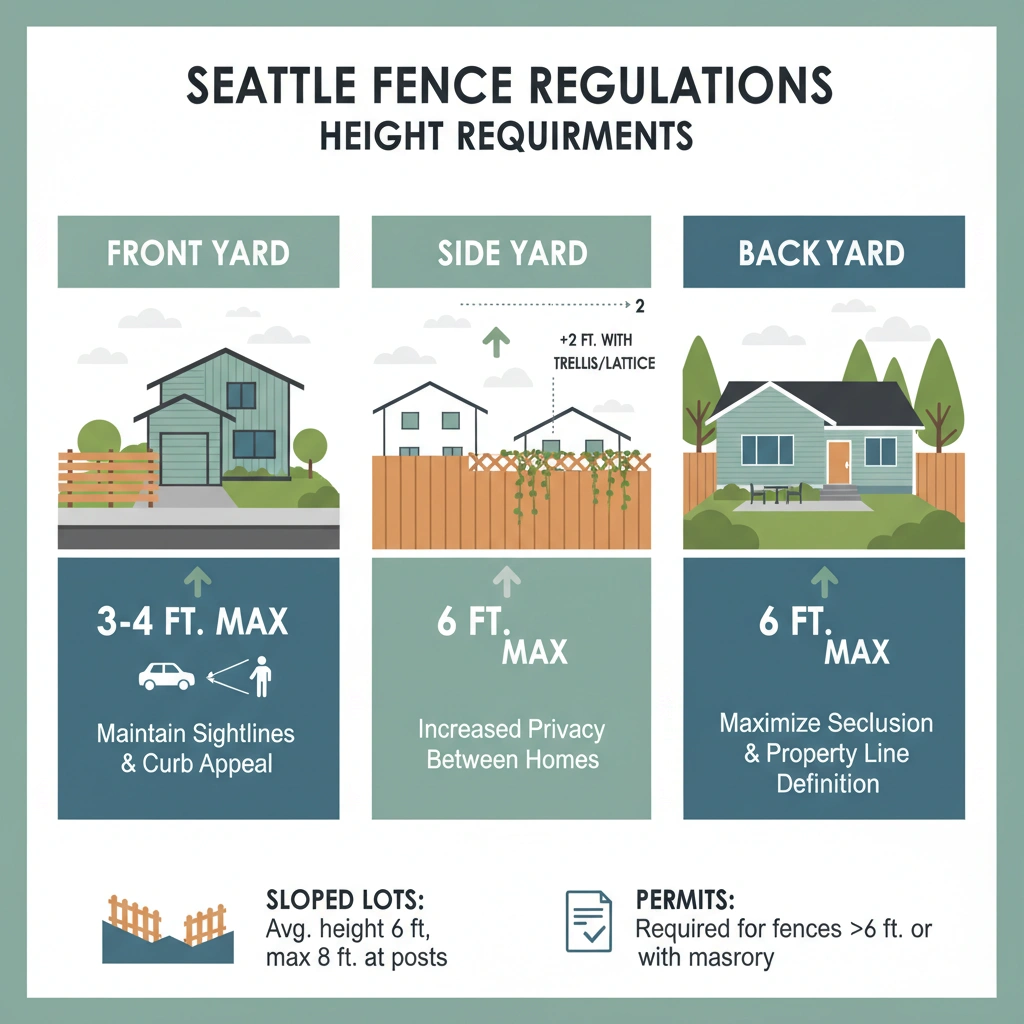
Understanding Seattle's horizontal fence height regulations
Before investing in materials or labor, it’s important to know exactly what the horizontal fence height rules are in Seattle. Fence regulations are set to balance a homeowner’s desire for privacy with the community’s need for safety, visibility, and consistent neighborhood character. According to the Seattle Department of Construction & Inspections (SDCI), the maximum height for most property fence projects in residential zones is six feet. However, certain features like trellises or lattice panels can extend an additional two feet above that limit if designed as architectural elements.
The rules differ depending on where the fence sits: front yard, side yard, or backyard. In highly visible areas such as the front of the home, restrictions are tighter because fences affect curb appeal and driver sightlines. In the back and along sides, homeowners often have more freedom to build taller fences that maximize privacy. These regulations aren’t unique to Seattle — nationwide, planners follow principles outlined by organizations such as the American Planning Association, which emphasize visibility at intersections and neighborhood aesthetic appeal as reasons for height limits.
Seattle also makes allowances for sloped lots, where a fence may measure fence height at eight feet tall if its “average height” between posts doesn’t exceed six feet. This flexibility ensures homes on hillsides can still achieve both function and fairness.
By understanding the city’s fence regulations up front, homeowners avoid costly mistakes such as tearing down noncompliant taller structures or applying for variances after the fact. It also helps to create realistic expectations when designing an ideal fence that fits within the rules while enhancing the residential property.
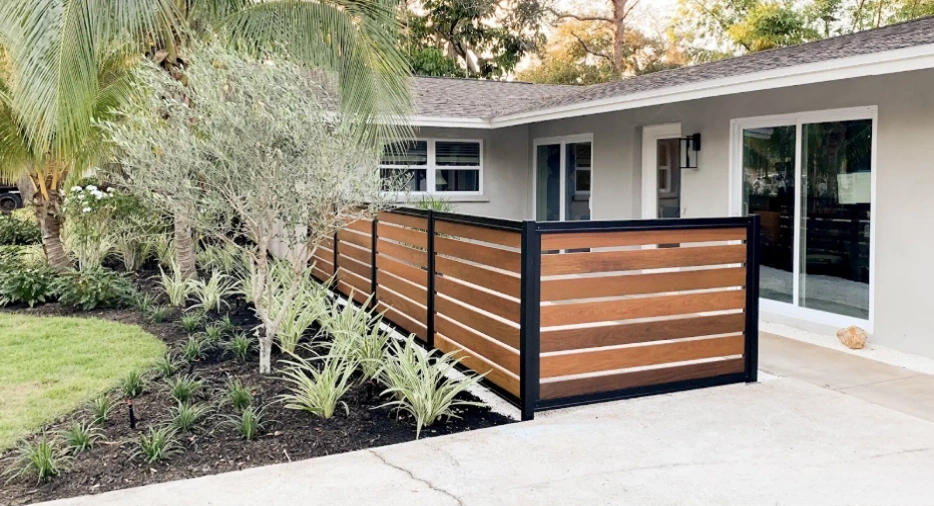
Front yard restrictions for horizontal fences
Seattle takes a conservative approach to the front yard fence height, limiting most fence in front yard installations to about three or four feet. The intent is to maintain open sightlines and preserve a welcoming street view. For homeowners considering a horizontal design, this typically means using shorter runs that complement landscaping rather than create a solid barrier. Decorative horizontal patterns, alternating boards, or integrated planters can add style even when the fence itself is lower than desired.
Backyard and side yard fence height standards
By contrast, Seattle’s privacy fence height rules allow greater flexibility in rear and side yard spaces. Here, fences up to six feet are standard, with the option to extend higher in some conditions. Because these areas define fencing boundaries between neighbors, they are often chosen for backyard fences or side yard installations with taller fences that maximize seclusion without compromising city codes. Homeowners can also incorporate lattice extensions or plantings to soften the look while reaching the highest allowable privacy level.
⭐⭐⭐⭐⭐
“Inline Fence was great about building our fence. We asked for multiple quotes as we were going back and forth with our neighbors, and truly appreciated Eduard's patience in explaining the process and breakdowns. The fence looks exactly as we wanted, with even cedar boards and great alignment against other walls/fences.”– Sophia
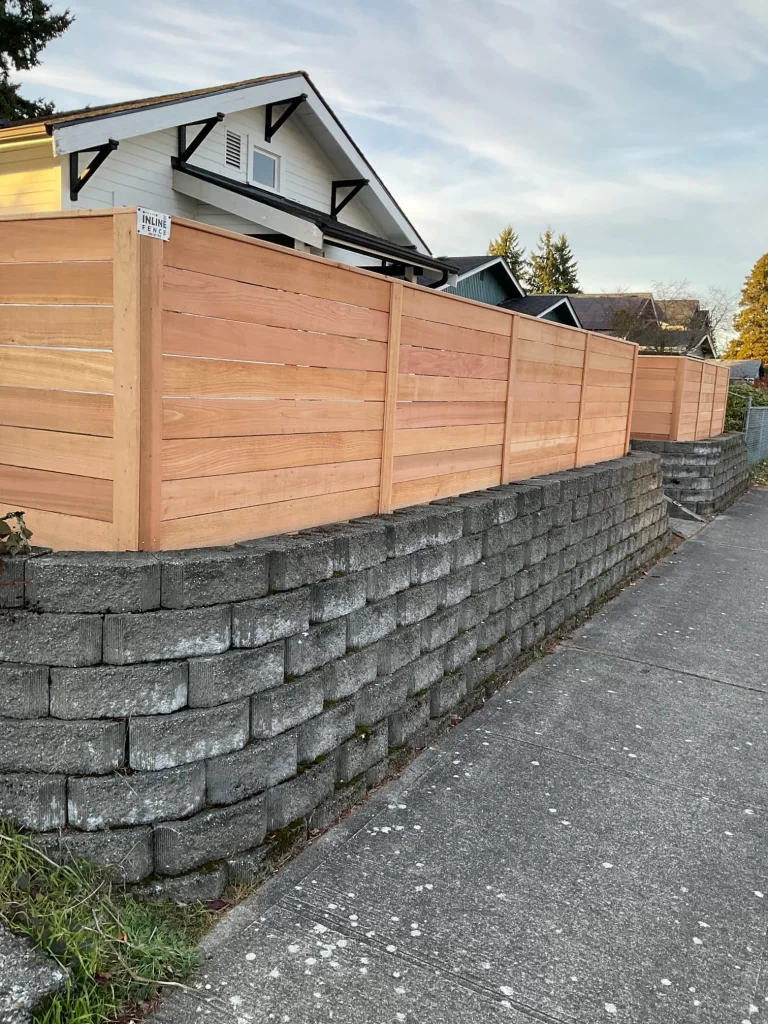
Why horizontal fencing is trending in Seattle homes
In recent years, the horizontal fence has surged in popularity across Seattle neighborhoods. Its clean lines, contemporary appearance, and versatility make it a favorite for homeowners looking to update their property’s exterior without sacrificing function. Unlike traditional vertical fencing, horizontal designs create a sense of visual openness while still defining property lines, making them particularly appealing for houses with fences in front.
Aesthetically, horizontal fencing expands perceived space. By drawing the eye along the length of the fence, rather than straight up, it creates a modern, streamlined look that complements Northwest architecture, which often emphasizes simplicity, natural materials, and large windows. This effect is especially valued in smaller lots where vertical fences can feel imposing. Homeowners frequently pair horizontal boards with warm-toned woods like cedar or wood fence styles to blend seamlessly with their landscaping and outdoor living areas.
The trend is also driven by functional considerations. Horizontal fences offer flexibility in privacy, allowing varying spacing between boards for light, air flow, or visibility. This adaptability makes them a practical choice for families who want to maintain a connection to the neighborhood while still creating private backyards or side yards.
Demographically, homeowners aged 45–60 are among the most likely to choose horizontal fences. Many in this group are seeking upgrades that combine low-maintenance materials, modern aesthetics, and long-term value. The design strikes a balance between curb appeal and privacy, providing a solution that works for both social and practical purposes.
As Seattle residents continue to prioritize both style and utility, the horizontal fence stands out as a design that can be tailored to individual property needs while remaining compliant with city regulations. Its popularity reflects a broader movement toward fences that are functional, visually appealing, and seamlessly integrated into the landscape.
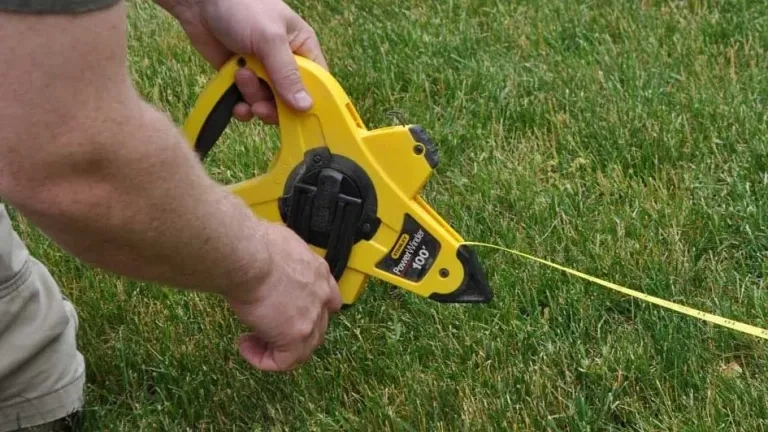
Planning your horizontal fence project within height limits
Proper fence planning is key to building a stylish and compliant horizontal fence in Seattle. Before purchasing materials or starting construction, homeowners should take careful measurements and establish clear boundaries. Begin by verifying your property lines, either through a recent survey or by consulting county records. Knowing exactly where your fence will sit is essential, especially when building a fence on property line to avoid disputes with neighbors or code violations.
Once boundaries are confirmed, create a detailed fence layout plan. Map out the full perimeter of your yard, noting any slopes, gates, or obstructions like trees and utility lines. In front yards, consider how a lower horizontal fence can complement landscaping, while in back and side yards, plan for taller sections that maximize privacy within Seattle’s six-foot maximum height limit.
Spacing between horizontal boards is another important aspect of planning. Wider gaps allow light and airflow, creating a sense of openness, while tighter spacing provides more seclusion. Many homeowners combine horizontal boards with natural elements such as hedges or climbing plants to enhance privacy and soften the structure’s appearance.
Finally, consider long-term maintenance and accessibility. Position posts and panels in a way that allows for future repairs and treatment, especially in Seattle’s wet climate where wood and composite materials may need occasional care at ground level. By thoughtfully approaching fence planning, you can design a fence that balances aesthetic appeal, privacy, and compliance — resulting in a structure that enhances your property while adhering to local zoning laws.
👉 Trust Inline Fence to build a durable, stylish horizontal fence tailored to your yard, providing both privacy and a modern look for Seattle homes.
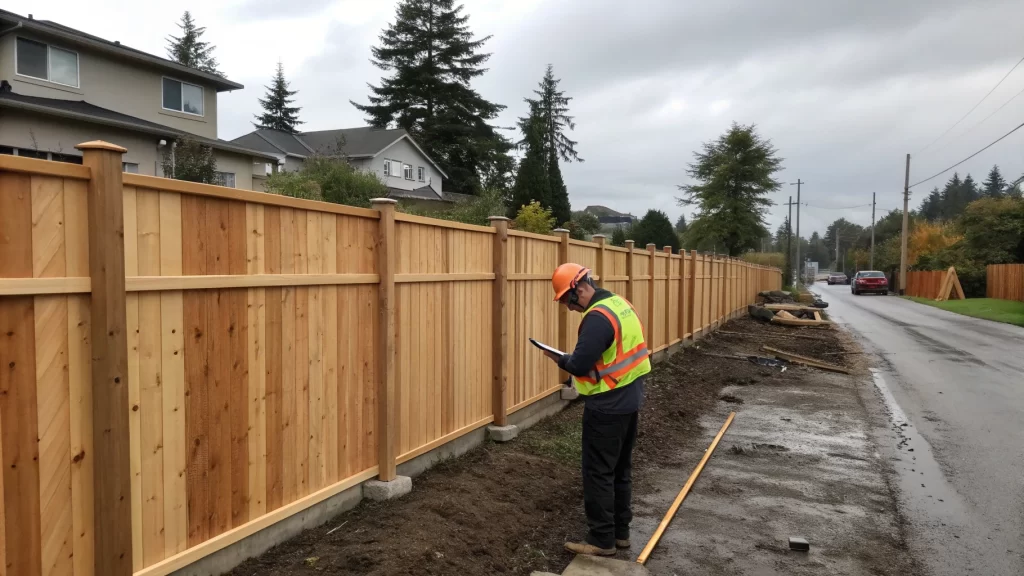
Permit requirements for horizontal fences in Seattle
Before starting any horizontal fence project, it’s important to understand when a permit for a fence is required in Seattle. Not all fence installations need city approval, but failing to obtain a necessary permit can lead to fines, required modifications, or even removal of the structure. According to the SDCI, a building permit for fence is generally not required for fences that are six feet or lower, as long as they are not made of masonry or concrete above that height.
Fences that exceed six feet, include built-in planters, trellises, or decorative features extending over the standard height, typically require a permit to build a fence. The application process involves submitting a site plan showing property lines, fence dimensions, and construction materials. The SDCI may also verify that the fence complies with sightline, utility, and zoning requirements. In some cases, additional approvals may be necessary for corner lots or slopes where average fence height calculations apply.
Seattle’s permitting process helps maintain safety, neighborhood aesthetics, and property value. Understanding requirements early allows homeowners to plan accordingly and avoid costly rework.
When do you need a fence permit?
A permit for a fence is needed in several common scenarios:
- Any fence taller than six feet in back or side yards.
- Front yard installations exceeding three or four feet, depending on neighborhood zoning.
- Fences with masonry or concrete elements above the standard height.
- Projects encroaching on property lines, easements, or utility corridors.
Exceptions exist for temporary fencing, small decorative fences, or projects fully under the six-foot height limit.
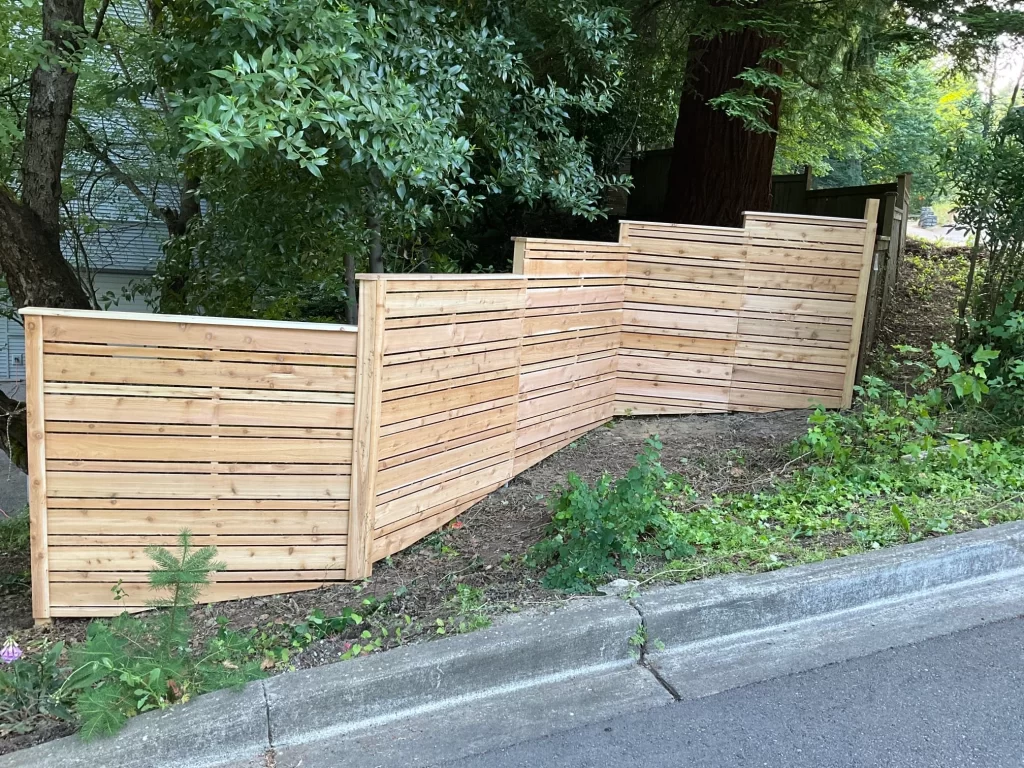
Balancing privacy needs with regulatory compliance
Achieving the right level of privacy while adhering to Seattle’s privacy fence height rules requires careful planning and creative solutions. Even within height restrictions, homeowners can design a fence that feels secluded and stylish. One effective strategy is to build the fence at the maximum allowable height, ensuring that privacy is maximized without violating regulations.
Board placement plays a critical role. For horizontal fences, spacing boards closer together reduces visibility while still allowing light and airflow. Alternatively, staggered or offset board patterns can create the illusion of greater privacy without increasing height. Many Seattle homeowners pair fences with natural elements like shrubs, hedges, or climbing plants. These additions not only enhance privacy but also soften the fence’s appearance and integrate it into the landscape.
Another solution is the “over fence” feature, such as trellises or lattice panels, which can extend above standard height limits in specific circumstances permitted by SDCI. These features add vertical interest and can be customized with vines or decorative accents, providing additional seclusion while remaining compliant.
Strategic planning ensures that your privacy fence height meets both functional and aesthetic goals. By combining thoughtful board placement, landscaping, and allowable vertical extensions, homeowners can enjoy a backyard sanctuary without compromising safety or local codes. This approach delivers a balance of comfort, style, and legal compliance, making a horizontal fence both practical and visually appealing in Seattle neighborhoods.
Design strategies for code-compliant horizontal fences
Even when restricted by horizontal fencing height rules, there are many ways to create a visually appealing and functional fence. Proper spacing between boards can enhance the sense of openness, while choosing complementary colors and finishes can make a lower fence feel more substantial. Using contrasting stains or paints, for example, can highlight architectural details and add depth to your outdoor space.
In addition, integrating decorative elements such as lattice panels, built-in planters, or trellises can create vertical interest without violating height restrictions. Attention to detail at posts, gates, and corners ensures a cohesive appearance. Lighting can also enhance both functionality and aesthetics, casting warm glows along the fence line for evening enjoyment.
By combining these strategies, Seattle homeowners can design a horizontal fence that respects fence regulations, maximizes curb appeal, and maintains the clean, contemporary look characteristic of modern Northwest homes.
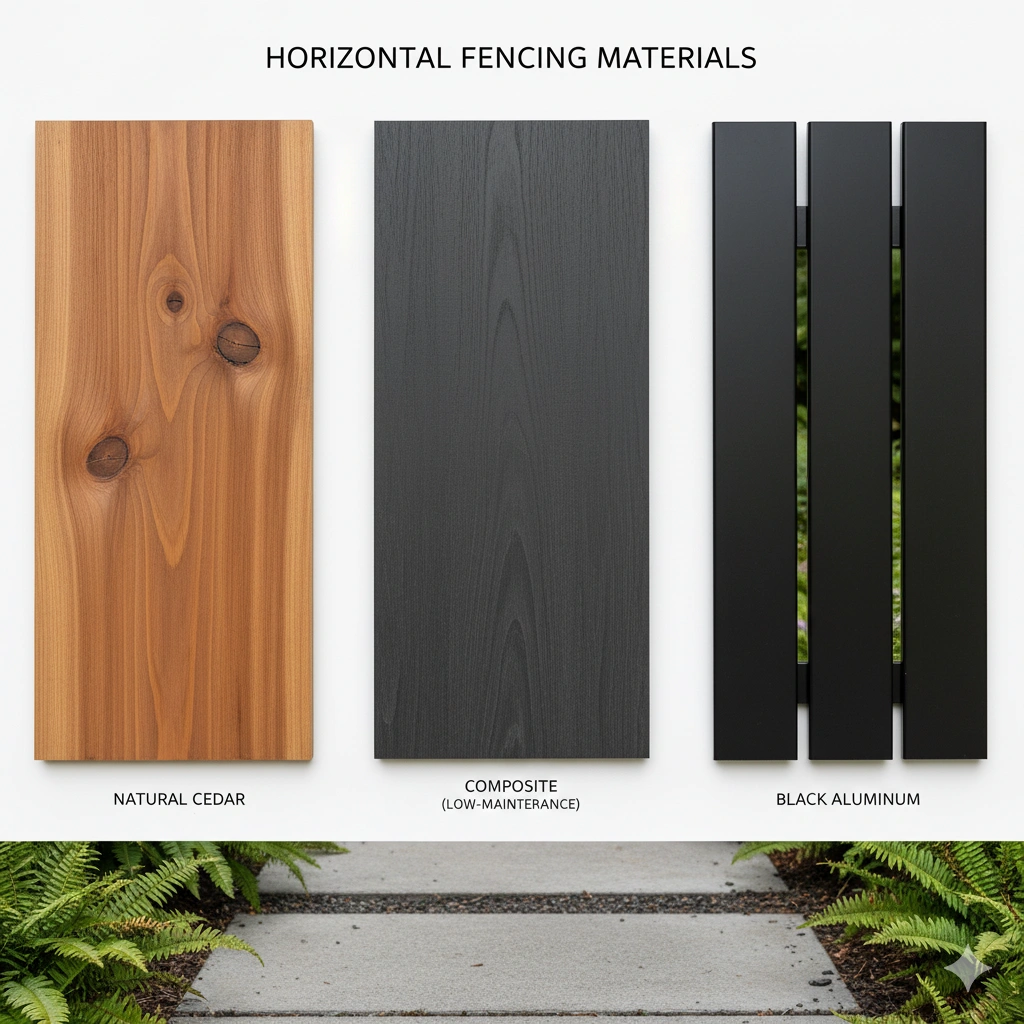
Choosing the right materials for your horizontal fence
Selecting the proper materials is crucial when you build fences that last and complement your property. Cedar is a popular choice in Seattle for its natural resistance to moisture and insects, while composite materials offer low maintenance and durability. Metal options, like aluminum or steel panels, or wrought iron provide modern aesthetics and structural strength. Consider the local climate – damp conditions favor rot-resistant materials, and finishes should withstand rain and sun exposure. By choosing the right materials, homeowners can create a horizontal fence that is both long-lasting and visually striking.
👉 Work with Inline Fence to create a sleek, code-compliant horizontal fence that enhances privacy and elevates your Seattle home's curb appeal.
Common mistakes to avoid when building horizontal fences
Building a residential fence in Seattle can be straightforward, but overlooking key details often leads to costly errors. One of the most common mistakes is miscalculating property boundaries. Installing a fence without confirming lines can result in disputes with neighbors or violations requiring adjustments. Always verify measurements before building a fence property line.
Ignoring permit requirements is another frequent issue. Even experienced homeowners may assume that all fences under six feet are exempt. However, features like trellises, masonry, or sections exceeding standard heights require a permit for a fence. Failing to obtain approval can lead to fines or mandatory removal.
Other mistakes include neglecting slope adjustments, which can make a fence uneven or noncompliant, and improper board spacing that either compromises privacy or reduces airflow. Choosing materials unsuitable for Seattle’s wet climate can also shorten the lifespan of your investment.
Planning, accurate measurements, and understanding local regulations are key to avoiding these pitfalls. By addressing these common mistakes before construction, homeowners ensure a horizontal fence that is safe, compliant, and visually appealing, while also protecting property value and neighbor relations.
Working with professional fence contractors
Hiring professionals can make all the difference when fencing your yard in Seattle. Experienced contractors, like Inline Fence, understand local regulations, including front, side, and backyard height restrictions, and ensure that your side yard fences meet code without sacrificing design or privacy.
Professionals also bring expertise in materials, installation techniques, and long-term maintenance considerations. Inline Fence can help select the best wood, composite, or metal for Seattle’s climate, ensuring your horizontal fence remains durable and attractive over time. Moreover, contractors typically provide warranties, giving homeowners peace of mind that their investment is protected.
Working with a reputable installer like Inline Fence streamlines the process, from initial fence planning to final construction, and reduces the risk of common errors such as misaligned posts, incorrect board spacing, or permit oversights. For Seattle homeowners who want a stylish, compliant, and low-maintenance fence, professional guidance is often worth the investment, saving both time and potential headaches.
Conclusion
Building a horizontal fence in Seattle doesn’t have to be a compromise between style and compliance. By understanding the city’s horizontal fence height rules, verifying property lines, and planning carefully, homeowners can create a fence that provides privacy, enhances curb appeal, and complements modern Northwest architecture.
Design strategies such as proper board spacing, creative materials, and optional trellises or landscaping can help maximize privacy while staying within allowed heights. Avoiding common mistakes and, when needed, working with professional contractors ensures a smooth installation and long-lasting results.


